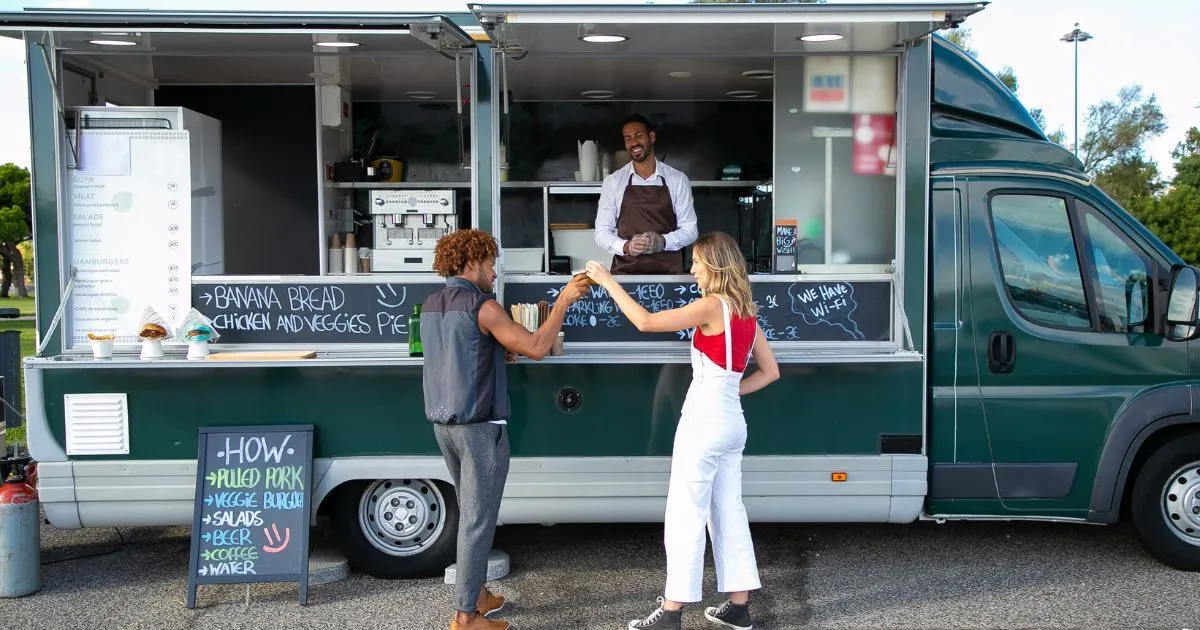How Much Does a Food Truck Cost: A Comprehensive Guide for Entrepreneurs

Table of Content

The food truck industry has witnessed a remarkable surge in popularity in recent years, offering a fantastic opportunity for aspiring entrepreneurs to turn their culinary passions into a thriving business. However, like any venture, starting a food truck business requires careful financial planning and an understanding of the costs involved. In this article, we'll delve into the various factors that influence the cost of a food truck and explore the essential expenses you need to consider when embarking on this exciting journey.
Food Truck Acquisition Cost
The most significant upfront expense in starting a food truck business is, undoubtedly, the cost of acquiring the actual vehicle. Food trucks come in various sizes and configurations, and their prices can vary significantly depending on factors like size, age, condition, and additional features. On average, a new food truck can cost anywhere between $50,000 to $150,000, while used ones may be available for around $20,000 to $100,000. Custom-built trucks or those with specialized equipment tend to be on the higher end of the price spectrum.
Equipment and Kitchen Setup
Apart from the truck itself, you'll need to invest in a fully functional kitchen setup to prepare your delicious offerings. Equipment costs can include refrigerators, ovens, grills, fryers, sinks, ventilation systems, and other essential appliances. The expenditure on equipment can range from $20,000 to $50,000 or more, depending on the complexity and quality of the kitchen setup.
Permits, Licenses, and Legal Expenses
To operate a food truck legally, you'll need to obtain various permits and licenses. The specific requirements and associated costs vary from one location to another, as regulations are dictated by city, county, and state authorities. On average, you should budget between $500 to $5,000 for initial permits and licenses. Additionally, legal fees for setting up your business structure (LLC, sole proprietorship, etc.) should also be factored in.
Vehicle Customization and Branding
Making your food truck visually appealing and distinct can contribute significantly to your success. Customizing the exterior and interior with attractive branding, logos, and designs can create a lasting impression on potential customers. Depending on the complexity of your chosen design, branding costs can range from $2,000 to $10,000.
Insurance and Safety Measures
Ensuring the safety of your customers, employees, and assets is of utmost importance. Food truck owners need to invest in comprehensive insurance coverage, including general liability insurance, auto insurance, and workers' compensation insurance. The cost of insurance can vary based on factors like location, coverage limits, and the size of your business, with annual expenses ranging from $2,000 to $6,000.
Operating Costs
Operating a food truck incurs various ongoing expenses, including purchasing ingredients, fuel, vehicle maintenance, parking fees, and employee wages. Monthly operating costs can vary widely based on factors such as location, menu complexity, and the number of working days. On average, you should anticipate monthly expenses between $3,000 to $8,000.
Marketing and Promotional Activities
To attract customers and build a loyal following, you'll need to invest in marketing and promotional efforts. This can include social media campaigns, local advertisements, participating in events, and maintaining a user-friendly website. Allocate a budget of around $500 to $2,000 per month for marketing activities.
How to open a Food Truck: Turning Your Culinary Dreams into a Mobile Culinary Adventure
STEP 1: Research and Conceptualization
Identify Your Niche: Begin by determining the type of cuisine you want to offer and the target market you wish to cater to. Consider the popularity of certain food items in your area, customer preferences, and potential competition.
Market Analysis: Conduct thorough research on the local food truck industry and identify potential locations for your business. Analyze the demand for your cuisine, competition, and popular gathering spots for food trucks.
Create Your Menu: Craft a mouthwatering and manageable menu that reflects your culinary skills and aligns with your target audience's preferences. Keep the menu concise to ensure efficient operations.
Step 2: Business Planning and Legalities
Business Plan:
Develop a detailed business plan outlining your concept, target market, menu, marketing strategies, financial projections, and operational structure. A well-thought-out business plan will be crucial for attracting investors or securing loans.
Legal Structure:
Decide on the legal structure of your food truck business (e.g., sole proprietorship, LLC, corporation) and register your business with the appropriate authorities.
Permits and Licenses:
Obtain all necessary permits and licenses required to operate a food truck in your area. This may include health permits, business licenses, zoning permits, and food handling certifications.
Insurance:
Protect your business by securing liability insurance, vehicle insurance, and any other necessary coverage to safeguard against potential risks.
Step 3: Vehicle Acquisition and Customization
Purchase or Lease:
Decide whether to buy a new or used food truck or lease one. Consider factors like budget, available options, and the condition of the vehicle.
Kitchen Setup:
Design a functional and efficient kitchen layout that optimizes space and allows for smooth operations. Install necessary equipment like cooking appliances, refrigerators, sinks, and storage.
Exterior Branding:
Develop a captivating and memorable branding strategy for your food truck. Include eye-catching logos, graphics, and designs that represent your brand and menu.
Step 4: Staffing and Training
Hiring Employees:
Recruit skilled and reliable staff members, such as cooks, servers, and cashiers, depending on the scale of your food truck business.
Training:
Provide thorough training to your team on food preparation, customer service, safety protocols, and the overall functioning of the food truck.
Step 5: Marketing and Promotion
Social Media Presence:
Leverage the power of social media to build a following and engage with potential customers. Use platforms like Instagram, Facebook, and Twitter to showcase your menu items, announce locations, and offer promotions.
Participate in Events:
Attend local food truck events, festivals, and gatherings to increase visibility and attract new customers. Collaborate with other food truck owners and event organizers to widen your network.
Online Presence:
Develop a user-friendly website or blog where customers can find information about your food truck's schedule, menu, and contact details.
Step 6: Launch and Operations
Soft Launch:
Before going all out, conduct a soft launch to test your menu, operations, and customer response. Gather feedback to make necessary adjustments.
Location Selection: Strategically choose high-traffic locations with potential customer footfall, such as busy streets, office areas, parks, or near popular attractions.
Consistency:
Maintain consistent operating hours and locations to build a loyal customer base and ensure that customers know when and where to find you.
Quality and Service:
Prioritize the quality of your food and provide exceptional customer service to leave a positive impression on patrons.
Frequently asked questions
- Food Truck Acquisition Cost
- Equipment and Kitchen Setup
- Permits, Licenses, and Legal Expenses
- Vehicle Customization and Branding
- Insurance and Safety Measures
- Operating Costs
- Marketing and Promotional Activities
- How to open a Food Truck Turning Your Culinary Dreams into a Mobile Culinary Adventure
- Research and Conceptualization
- Business Planning and Legalities
- Vehicle Acquisition and Customization
- Staffing and Training
- Marketing and Promotion
- Launch and Operations
- Frequently asked questions
- Explore more
- Ready to get started?


